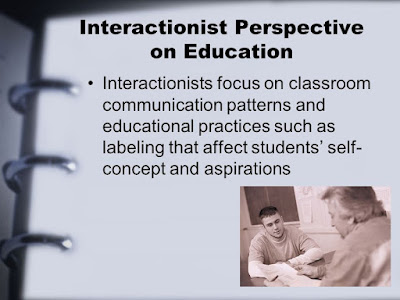Education:
Interactionists’ perspective
The
individuals with interactions’ perspectives are interested in day today
activities of the school and their effects on the students, teachers and
administrators of the school. After a minor part of socialization at home, children spend a major part of personal and social development in school. Social milieu is very important for a child’s
personal development (Thomson & Hickey, 1996).
Socialization
and personal development
Socialization
is a process whereby people learn and internalize the attitudes, values,
beliefs, and norms of culture and develop a sense of the self. Mostly learning
opportunities are planned to produce traditional values, transmit culture, and
reinforce social values and norms. Schools provide such a culture in which the
children interact with each other, teachers, and administrative personnel and
learn to operate in formal and non-formal normative systems. Through the educational process, the students learn about themselves and others and develop
attitudes, values, beliefs, and a sense of self that significantly influence the
rest of their lives.
Student-teacher
interaction
For
the students the important business in school is to maintain their social
lives. The students want to be star athletes, good-looking and popular than
smart or brilliant. Those boys or girls are considered popular who most closely
reflect the idealized images of masculinity and femininity. In order to structure their everyday world of
social interaction in school, the students usually form social groups based on
common interests and activities, and meaningful symbols.
Labeling
students
Labeling
students often lead to self-fulfilling prophecies such that predictions about
the students’ abilities shape future actions and behavior in such a way that
the predictions come true. The labeling process has a significant impact on social
interaction among students, teachers, and administrators. Labeling in school
impacts far more on adolescent’s self-concept and behavior.
Most
students consider their entrance into college after high school as in terms of
social significance rather than academic importance.

